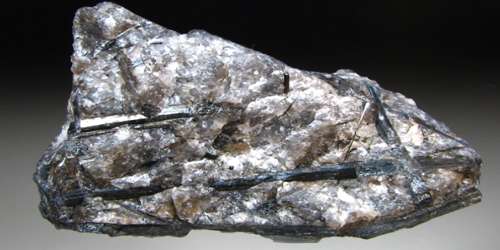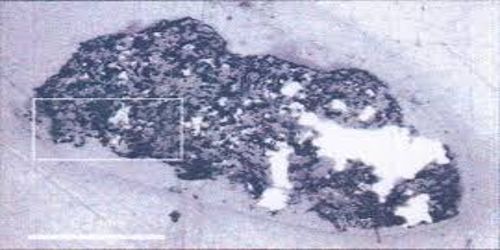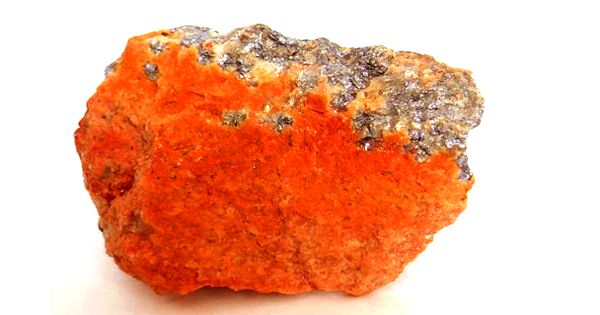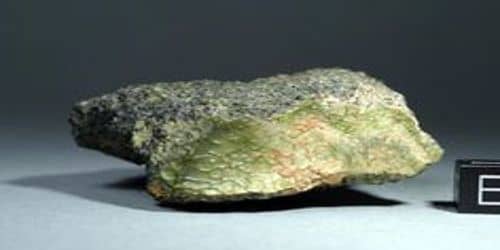Hollandite (chemical formula: [Ba(Mn64+Mn23+)O16] is an oxide mineral. It is the barium-manganese (III) endmember of the coronadite group. It is a monoclinic-prismatic white mineral containing aluminum, barium, iron, lead, manganese, oxygen, silicon, and sodium. It is a mineral consisting of a crystallized manganate of barium and manganese from central India.
General Information
- Category: Oxide minerals
- Formula: [Ba(Mn64+Mn23+)O16]
- Crystal system: Monoclinic
- Crystal class: Prismatic (2/m)
- Space group: Monoclinic
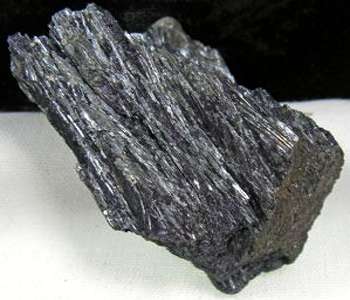
Fig: Hollandite
Properties
- Color: Silvery-grey to greyish
- Cleavage: Distinct / Good, Prismatic
- Mohs scale hardness: 4 to 6
- Density: 4.95
- Diaphaneity: Opaque
- Luminescence: Non-fluorescent.
- Luster: Earthy (Dull)
- Streak: black
Occurrence: A primary mineral in contact metamorphic manganese ores, and a secondary weathering product of earlier manganese-bearing minerals.
A mineral, with the chemical composition [Ba(Mn64+Mn23+)O16], that was first found in the Kajlidongri mine in the Jhabua district of Madhya Pradesh, India, had the name hollandite until it was reclassified as ferrihollandite by the International Mineralogical Association in 2012. Ferrihollandite is the barium-iron (III) endmember of the coronadite group.
Association: Bixbyite, braunite, piemontite, other manganese oxides.
Information Source:
